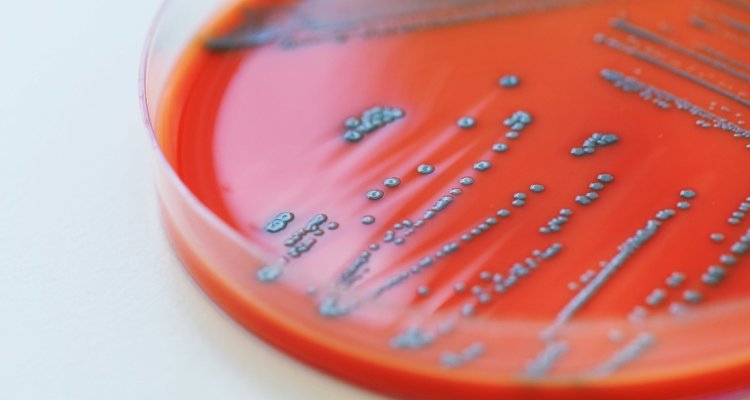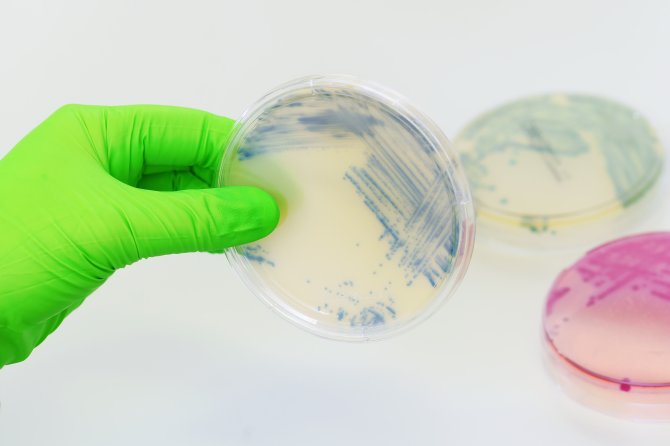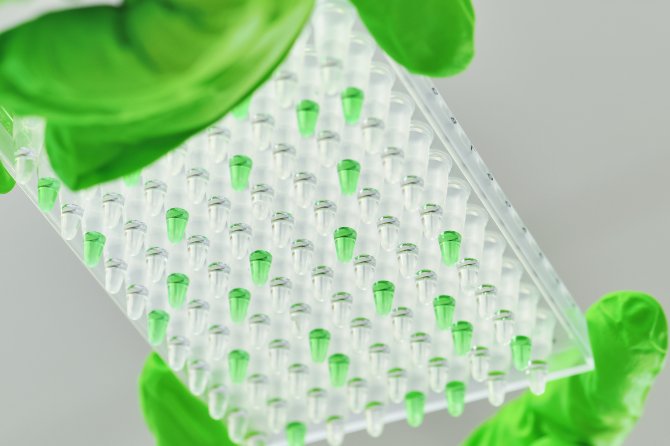
Bacteriology
Wageningen Food Safety Research focusses on research into bacteria that can be transmitted through food. We are the approved laboratory in the Netherlands for monitoring bacteriological food safety under the auspices of the NVWA (Dutch Food and Consumer Product Safety Authority). On a daily basis, we investigate hundreds of food samples from a wide range of sources for the presence of harmful bacteria, such as Salmonella and Listeria, using accredited detection methods.
Monitoring our bacteriological food safety
Our research is state of the art and we make use of the latest measurement techniques, including ddPCR, MALDI, gPCR and WGS.
Scientific and application-oriented research into bacteria
Below you will find out more about our varied work and how we make a contribution through them to food safety:
'Big four': Campylobacter, Salmonella, STEC and Listeria
Bacteriological research at WFSR is focussed primarily on the four most prevalent pathogens: Salmonella, Listeria, STEC and Campylobacter. We refer to these pathogens as the ‘Big Four’.
Campylobacter: This bacterium causes the most gastrointestinal tract infections in Europe by far. Infection is caused primarily by contaminated food or drinking water, or from contact with infected animals. The origin often lies in inadequate kitchen hygiene and the consumption of raw products.
Salmonella: causes mainly gastrointestinal tract infection, and this is frequently the result of consuming contaminated food. Inadequate heating of food and/or kitchen hygiene is a major cause of Salmonella infections as well. All Salmonella food isolates are classified by serotyping.
STEC: Infection with Shiga toxin-producing Escherichia coli may lead to mild or serious diarrhoea. In a small number of cases (2-7%), the condition deteriorates, sometimes with fatal consequences. Infection with STEC frequently occurs as a result of consuming inadequately heated/cooked meat.
Listeria: The most important characteristic of these bacteria is that they are able to survive and even grow at low (refrigerated) temperatures. Infection in humans is primarily the result of consuming contaminated food. Most infections are mild, but in the case of those with reduced resistance in particular, the progression of the illness may become extremely serious. At WFSR, we analyse each Listeria food isolate in real time using of Whole Genome Sequencing in order to detect possible outbreaks.

Detection methods used
Wageningen Food Safety Research has available a broad arsenal of accredited methods for detecting bacterial contamination. In the classical method, we place food in an environment intended to ascertain whether the specific bacteria will grow. Positive detection often results in a typical bacterial colony on a nutrient medium. Molecular detection methods are used for rapid screening and for identification. Using profiling we are able to investigate whether a detected bacterium is harmful to humans. For this we use gPCR, array techniques, genome sequencing analysis or MALDI, for example. Identification of a bacterial colony can be made within a few minutes by means of a MALDI analysis.

Sources of infection, matrices and the NVWA
Antimicrobial resistance
Genomics
Read more about our microbiology expertises virology, genomics and Antimicrobial Resistance Research (AMR).